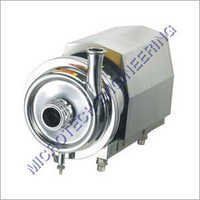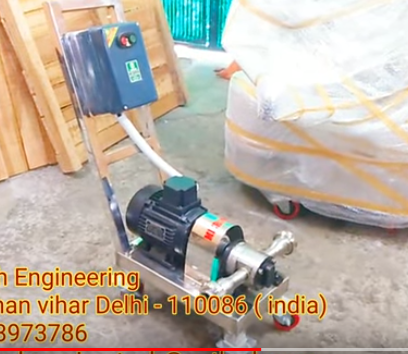










Syrup Transfer Pump Manufacturers In India
Product Details:
- Weight 80 Kilograms (kg)
- Product Type Rotary Positive displacement pumps
- Usage pulp and paper, chemical, food, beverage, pharmaceutical, and biotechnology
- Height 100 Centimeter (cm)
- Width 110 Centimeter (cm)
- Length 100 Centimeter (cm)
- Size 100MM
- Click to view more
Syrup Transfer Pump Manufacturers In India Price And Quantity
- 1 Unit
- 20095.00 INR/Unit
Syrup Transfer Pump Manufacturers In India Product Specifications
- STANDARD
- 25 TO 100 Centimeter (cm)
- 110 Centimeter (cm)
- 100 Centimeter (cm)
- STAINLESS STEEL
- pulp and paper, chemical, food, beverage, pharmaceutical, and biotechnology
- Rotary Positive displacement pumps
- 80 Kilograms (kg)
- Micro Fiber
- RECTANGLE
- ELECTRO POLISH
- New
- 100MM
- GMP MODEL
- Pre Filter
- 12 MONTH
- Cartridge Filter
- 100 Centimeter (cm)
Syrup Transfer Pump Manufacturers In India Trade Information
- Letter of Credit (L/C) Letter of Credit at Sight (Sight L/C) Telegraphic Transfer (T/T) Cheque
- 200 Unit Per Year
- 200 Years
- Yes
- Sample costs shipping and taxes has to be paid by the buyer
- WOODEN CHARGE
- Australia Eastern Europe Middle East South America Africa Central America Western Europe Asia North America
- All India
- ISO 9001-2015 MSME
Product Description
Microtech engineering Lobe pumps are used in a variety of industries including, pulp and paper, chemical, food, beverage, Pharmaceutical, and biotechnology. They are popular in these Diverse industries because they offer superb sanitary qualities, high efficiency, reliability, corrosion resistance, and good clean-in-place and sterilize-in-place (CIP/SIP) characteristics. These pumps offer a variety of lobe options including single, biwing, tri-lobe (shown), and multi-lobe. Rotary lobe pumps are Non-contacting and have large pumping chambers, allowing them to handle solids such as cherries or olives without damage. They are also used to handle slurries, pastes, and a wide variety of other liquids. If wetted, they offer self- priming performance. A gentle pumping action minimizes product degradation. They also offer reversible flows and can operate dry for long periods of time. Flow is relatively independent of changes in process pressure, so output is constant and continuous.
How Lobe Pumps Work Liquid flows into the cavity and is trapped by the lobes as they rotate.
Lobe pumps are similar to external gear pumps in operation in that fluid flows around the interior of the casing. Unlike external gear pumps, however, the lobes do not make contact. Lobe contact is prevented by external timinggears located in the gearbox. Pump shaft support bearings are located in the gearbox, and since the bearings are outof the pumped liquid, pressure is limited by bearing location and shaft deflection.
1. As the lobes come out of mesh, they create expanding volume on the inlet side of the
pump
2. Liquid travels around the interior of the casing in the pockets between the lobes
and the casing it does not pass between the lobes.
3. Finally, the meshing of the lobes forces liquid through the outlet port under pressure. Lobe pumps are frequently used in food applications because they handle solids without damaging the product. Particle size pumped can be much larger in lobe pumps than in other Positive Displacement Pump types. Since the lobes do not make contact, and clearances are not as close as in other Positive Displacement Pump, this design handles low viscosity liquids with diminished performance. Loading characteristics are not as good as other designs, and suction ability is low. High-viscosity liquids require reduced speeds to achieve satisfactory performance. Reductions of 25% of rated speed and lower are common with high-viscosity liquids.
Advantages
Pass medium solids
No metal-to-metal contact
Superior CIP/SIP capabilities
Long term dry run (with lubrication to seals)
Non-pulsating discharge
Disadvantages
Requires timing gears
Requires two seals
Reduced lift with thin

Price:
- 50
- 100
- 200
- 250
- 500
- 1000+
Other Products in 'Other Products' category
 |
MICROTECH ENGINEERING
All Rights Reserved.(Terms of Use) Developed and Managed by Infocom Network Private Limited. |

 Call Me Free
Call Me Free Send SMS
Send SMS














